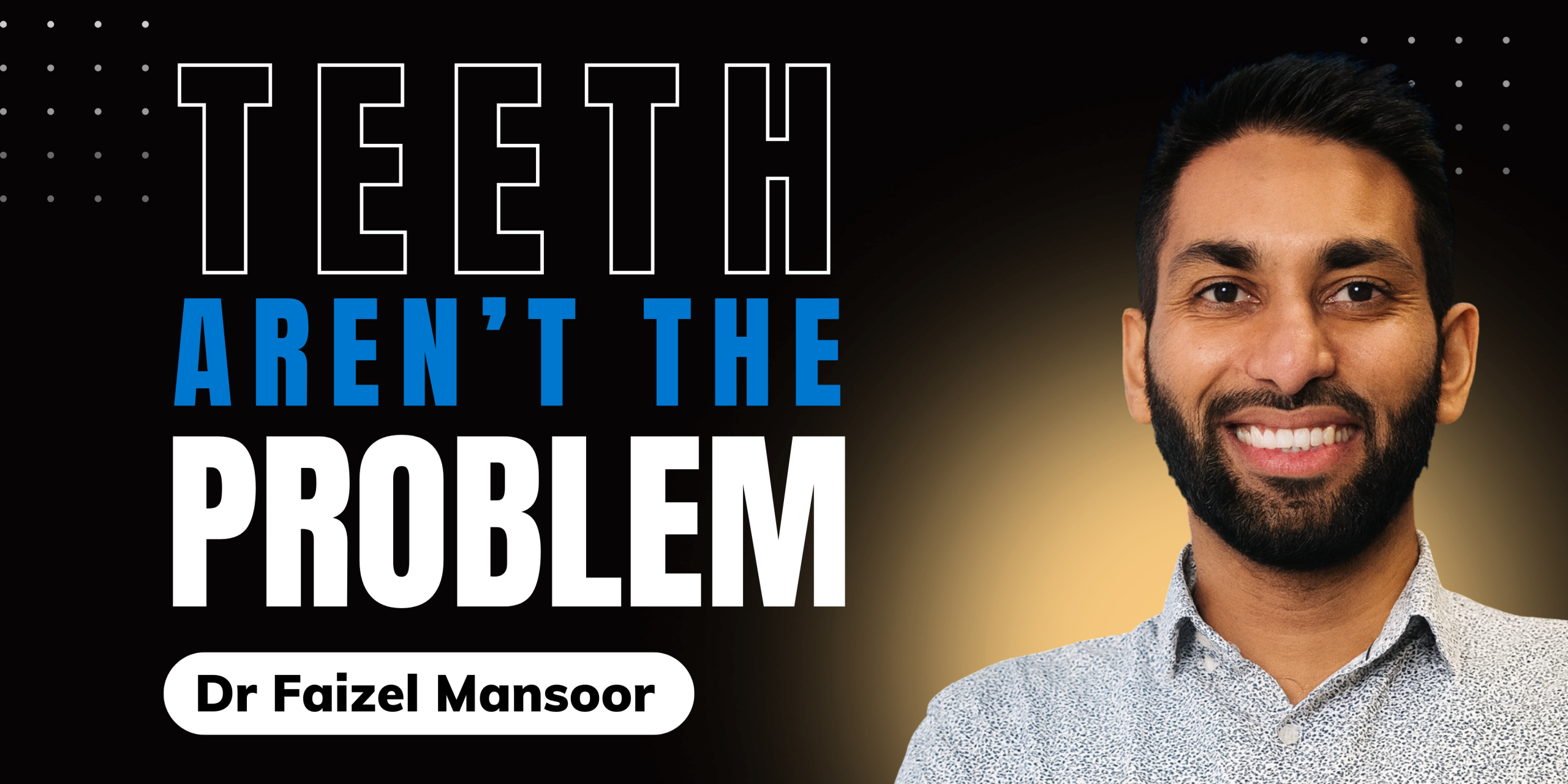Mouth Breathing in Dentistry: Dr Faizel Mansoor on Growth, Function, and a Bigger Picture

“Once you see it, you cannot unsee it.”
That line threads through Dr Faizel Mansoor’s story. And it starts with a personal moment: the day his daughter was born with a tongue tie. That moment pushed him to relook at everything he had been trained to do and everything the industry still defaults to. From there, mouth breathing in dentistry stopped being a side topic and became a lens for growth, health, and how faces develop over time.
In this Smile Club Podcast episode, the conversation is guest-led. Dr Mansoor unpacks what many dentists are taught at university versus what years of practice, research, and risk have shown him. Elton sits as host and entrepreneur in the room, asking questions about the business risks, the leadership decisions, and the purpose behind them.
Why mouth breathing in dentistry changes how faces grow
Dr Mansoor explained how allergies, pollution, and blocked noses push children into chronic mouth breathing. When the mouth stays open, the tongue sits low. The upper jaw loses the steady, gentle pressure that shapes its growth. Over time, the maxilla narrows, teeth crowd, and the mandible follows.
Many dentists were taught that crooked teeth are mostly genetic. He argues habits play a much bigger part. The body is wired for survival. Airway always wins. If the nose is blocked, the mouth opens. If that state becomes normal in the brain, the pattern sticks. That is where mouth breathing in dentistry links to posture, long faces, sleep, and even the way a child swallows.
Dentists and healthcare professionals who spot early signs can change the growth path by addressing function, not just the look of the teeth.
Myobrace, function, and the long game
His search for answers led him to Myobrace. He did not hear about it at university. He found it while researching what a tongue tie might mean for jaw growth and breastfeeding. The philosophy is simple to state and hard to execute: develop nasal breathing, lips together, tongue to palate, and healthy chewing and swallowing patterns. If function improves, the environment for eruption improves. Teeth can align around balanced muscles rather than be forced into a compromised arch.
Bringing Myobrace to South Africa was not neat or easy. Dr Mansoor told the story of being offered a chance to take 100 appliances home, with no customers and no distribution plan. He swiped a personal credit card anyway. Road shows followed. Courses followed. Stock started moving. Years later, he has training running across Africa and a feedback loop with the global team on product ideas.
From the outside it looks like “challenging the norm.” On the inside, it was years of education, investment, and tough conversations that did not always land well.
Dentistry beyond teeth and gums: a system, not a silo
Another theme in the episode is how dentists describe their own work. Dr Mansoor sees the mouth as part of the stomatognathic system. Teeth do not walk into your chair on their own. People do. And the body is an ecosystem.
He spoke about inputs, processing, and outputs. Garbage in, garbage out. The jaw, tongue, lips, cheeks, airway, posture, feet, and even past injuries can show up as symptoms that look “purely dental” if viewed in isolation.
That is where mouth breathing in dentistry shows up as more than a buzzword. If a child’s airway is under strain, you might see snoring now and sleep apnoea later. If a face grows backward instead of forward, you might see crowding now and headaches or craniofacial pain later. For him, early, function-first thinking is not an aesthetic debate. It is a health path.
Risk, purpose, and the work of building something new
The entrepreneurial thread runs through the whole conversation. Multiple practices. An MBA. SADA vice chair work. Being an early voice in a space that can feel like a moving target. He is candid that it has been painful at times. And he is just as clear that the patient sits at the centre. Do no harm. Do what is in the patient’s best interest.
The rest is learning, thick skin, and staying with the purpose long enough for the evidence and outcomes to compound.
Elton’s Reflection
What struck me was how many doors only opened for Dr Mansoor after the card swipe and the first awkward course with fifteen people. It reminded me that the purpose piece comes first, then the patience, then the proof. I see it in business all the time. We want the data before the decision, but sometimes it is the decision that creates the data. The way he frames mouth breathing in dentistry is not new tech. It is old biology seen with fresh eyes. That makes it tougher to market and easier to stand behind. I left the conversation thinking less about trends and more about habits. In work. In teams. In families. Fix the function and form will follow.
This blog only scratches the surface. The full episode with Dr Faizel Mansoor is packed with insights around mouth breathing in dentistry, entrepreneurship, and purpose.
🎧 Watch or listen to the full conversation on YouTube.
If you want to sharpen your skills and earn 8 CPD ethics points, explore the Meta You Course for Healthcare.
airway dentistry, breathing and health, child growth and development, craniofacial growth, crooked teeth causes, dental innovation, dentistry for children, functional dentistry, functional health, healthcare South Africa, holistic dentistry, Myobrace, myofunctional therapy, posture and airway, SADA (South African Dental Association), sleep apnoea dentistry, South African dentistry, tongue tie and growth